In today’s competitive digital landscape, businesses strive to generate quality leads through effective advertising strategies. Two prominent platforms stand out: Google Ads and Instagram Ads. Understanding the nuances of getting leads on Google Ads vs Instagram is essential for optimizing your marketing efforts.
As an advertising expert with over 10 years of experience, I’ve analyzed both platforms to provide a data-driven comparison, ensuring you make an informed decision that aligns with your business goals.
Understanding Google Ads for Lead Generation

Google Ads operates on an intent-based advertising model, connecting businesses with potential customers who are actively searching for specific products or services. This high level of user intent often translates to higher conversion rates.
Advantages:
- High Buyer Intent: Users are actively seeking solutions, leading to potentially higher conversion rates.
- Extensive Reach: With over 100,000 searches per second, Google offers unparalleled visibility.
- Diverse Ad Formats: Options include search ads, display ads, shopping ads, and video ads, catering to various marketing objectives.
Considerations:
- Cost Variability: Highly competitive keywords can lead to increased costs per click.
- Complexity: Effective campaign management requires a deep understanding of keyword strategies and continuous optimization.
Exploring Instagram Ads for Lead Generation

Instagram, a visually-driven platform, excels in engaging users through compelling imagery and videos. It’s particularly effective for brands aiming to build awareness and foster community engagement.
Advantages:
- Visual Engagement: High-quality visuals can captivate users, enhancing brand recall.
- Targeted Advertising: Advanced targeting based on demographics, interests, and behaviors allows for precise audience reach.
- Active User Base: Instagram boasts a large and active user base, making it ideal for businesses looking to connect with a diverse audience.
Considerations:
- Lower Buyer Intent: Users may not be actively seeking products or services, potentially leading to lower conversion rates.
- Ad Fatigue: The integrated nature of ads into user feeds can lead to ad fatigue if not managed creatively.
Getting Leads on Google Ads vs Instagram: Comparative Performance Insights

When evaluating cost-effectiveness, Google Ads often emerges as the more economical choice for driving clicks. Studies have shown that Google Search Ads have a lower cost per click (CPC) compared to Instagram Feed Ads. While Instagram Story Ads may offer even lower CPCs, they tend to drive fewer clicks than Google Search ad campaigns.
In terms of return on investment (ROI), Google Ads has demonstrated superior performance in certain scenarios. For example, in a case study involving Beard King, Google Ads generated 254 more clicks than Instagram Ads, representing an additional ROI of 25%. Additionally, the average CPC for Google Ads was $0.30 lower than that of Instagram Ads, resulting in cost savings while gaining extra clicks.
Google vs Instagram: Pros and Cons of Each Advertising Platform

When choosing between Google Ads and Instagram Ads for lead generation, it’s crucial to understand the unique advantages and limitations each platform offers. This knowledge will help you align your advertising strategy with your business objectives and target audience effectively.
Google Ads:
- Pros:
- Immense Search Volume: Google processes billions of searches daily, providing businesses with a vast audience to reach.
- High Buyer Intent: Users actively searching for specific products or services often have a higher intent to purchase, leading to potentially higher conversion rates.
- Diverse Ad Formats: Google Ads offers various ad formats, including text-based search ads, display ads, and video ads, catering to different marketing objectives.
- Cons:
- Competition and Costs: In highly competitive industries, bidding on popular keywords can be expensive, increasing the cost per click.
- Learning Curve: Effective campaign management requires a solid understanding of keywords, bidding strategies, and continuous optimization, which can be challenging for beginners.
Instagram Ads:
- Pros:
- Visual Engagement: Instagram’s emphasis on high-quality visuals allows brands to create captivating ads that enhance user engagement and brand recall.
- Targeted Advertising: Advanced targeting options based on demographics, interests, and behaviors enable precise audience reach.
- Active User Base: With a large and active user base, Instagram is ideal for businesses aiming to connect with a diverse and engaged audience.
- Cons:
- Lower Immediate Purchase Intent: Users on Instagram may not be actively seeking products or services, which can result in lower immediate conversion rates.
- Ad Fatigue: The integrated nature of ads into user feeds can lead to ad fatigue if the content is not varied and engaging.
By carefully evaluating these pros and cons, businesses can make informed decisions about which platform aligns best with their marketing goals and audience preferences.
Google Ads vs Instagram Ads: A Side-by-Side Comparison
To determine which platform aligns best with your marketing objectives, it’s essential to compare Google Ads and Instagram Ads across key features and performance metrics.
| Feature | Google Ads | Instagram Ads |
| User Intent | High (active search) | Low (passive scrolling) |
| Targeting | Keyword, location, demographics | Interests, behaviors, lookalikes |
| Ad Formats | Search, Display, Shopping, Video | Feed, Stories, Reels, Carousel |
| Lead Quality | Potentially higher due to user intent | May require nurturing through engagement |
| Engagement Rate | Lower (search-based) | Higher (visual & social engagement) |
| Cost Per Click | Higher for competitive industries | More affordable but varies |
| Ease of Setup | Requires understanding of keyword bidding and campaign management | More straightforward; focuses on creative visuals and audience targeting |
By evaluating these aspects, businesses can make informed decisions on whether Google Ads or Instagram Ads better suit their lead generation needs.
Choosing the Right Platform for Lead Generation

Selecting the appropriate advertising platform is crucial for effective lead generation. Understanding the distinct advantages of Google Ads and Instagram Ads will help you align your strategy with your business objectives and target audience.
When to Use Google Ads:
- High-Intent Searches: If your business relies on capturing users actively searching for specific products or services, Google Ads is ideal. For example, a Reddit user reported achieving a minimum of 3x ROI on a bad day with Google Ads, with good days ranging between 6-8x ROI.
- Budget Considerations: Be prepared for potentially higher costs per click, especially in competitive industries.
- Advanced Targeting Needs: Utilize Google’s robust targeting and remarketing features to reach specific audience segments.
When to Use Instagram Ads:
- Visual Appeal: Ideal for businesses with visually engaging products or services that can leverage Instagram’s emphasis on imagery and video content.
- Brand Awareness Goals: If your objective is to build brand recognition and engage with a younger, active audience, Instagram offers the tools to foster community and interaction.
- Cost Efficiency: Instagram Ads can be more affordable, making them suitable for businesses with limited advertising budgets.
By evaluating your specific goals and understanding the unique strengths of each platform, you can make an informed decision that maximizes your lead-generation efforts.
Maximizing Lead Generation on Both Google Ads and Instagram

To fully harness the potential of Google Ads and Instagram Ads for lead generation, it’s essential to implement tailored strategies that align with each platform’s unique strengths. By adopting best practices specific to Google Ads and Instagram Ads, businesses can enhance their lead acquisition efforts and achieve optimal results.
Best Practices for Google Ads:
- Utilize Conversion Tracking: Implement conversion tracking to monitor lead generation performance and refine your campaigns based on data-driven insights.
- Craft Compelling Ad Copy: Develop engaging and relevant ad copy that resonates with your target audience, encouraging clicks and conversions.
- Optimize Landing Pages: Ensure that landing pages are user-friendly, load quickly, and provide clear calls-to-action to facilitate lead capture.
- Leverage Ad Extensions: Use ad extensions to provide additional information and increase ad visibility, enhancing the likelihood of attracting potential leads.
Best Practices for Instagram Ads:
- Create Engaging Visual Content: Design high-quality visuals that capture attention and convey your brand message effectively.
- Utilize Lead Forms: Incorporate lead forms within your ads to streamline the lead capture process, reducing friction for users.
- Employ Precise Targeting: Leverage Instagram’s advanced targeting options to reach users based on demographics, interests, and behaviors, ensuring your ads resonate with the intended audience.
- Monitor and Adjust Campaigns: Regularly analyze ad performance metrics and make data-driven adjustments to optimize lead generation outcomes.
Strategic Recommendations:
- Align with Business Objectives: If immediate lead generation is the goal, especially for services or products with high search intent, Google Ads may be more effective. Conversely, for brand building and engaging a younger demographic, Instagram Ads could be advantageous.
- Budget Allocation: Consider starting with a test budget on both platforms to analyze performance metrics specific to your industry and audience.
- Creative Development: Tailor ad creatives to each platform’s strengths—utilize strong visual content for Instagram and keyword-optimized text for Google Ads.
- Continuous Monitoring: Regularly assess key performance indicators such as click-through rates, conversion rates, and cost per acquisition to refine strategies.
By implementing these strategies, businesses can effectively maximize lead generation on both Google Ads and Instagram Ads, leveraging each platform’s unique capabilities to reach and engage potential customers.
Lead-Generation Google Ads and Instagram Ads Budget Allocation Plan Example

Allocating your marketing budget effectively between Google Ads and Instagram Ads is crucial for maximizing lead generation. Here’s a concise plan for Company A, which has an annual revenue of $40 million and allocates 10% of this revenue to marketing.
- Determine the Total Marketing Budget:
- Annual Marketing Budget: 10% of $40 million equals $4 million annually.
- Monthly Marketing Budget: $4 million divided by 12 equals approximately $333,333 per month.
- Allocate Budget Between Google Ads and Instagram Ads:
- Google Ads: 60% of the monthly budget, equating to approximately $200,000 per month.
- Instagram Ads: 40% of the monthly budget, equating to approximately $133,333 per month.
- Implementation Strategy:
- Google Ads:
- Campaign Types: Invest in Search Ads to capture high-intent leads and Display Ads for brand awareness.
- Budget Distribution: Allocate 70% to Search Ads and 30% to Display Ads.
- Monthly Spend: Approximately $140,000 on Search Ads and $60,000 on Display Ads.
- Instagram Ads:
- Ad Formats: Utilize a mix of Story Ads, Feed Ads, and Carousel Ads to engage users.
- Budget Distribution: Allocate funds evenly across ad formats to determine which performs best.
- Monthly Spend: Approximately $44,444 per ad format.
- Testing and Optimization:
- Allocate Budget for Test Ads: Dedicate 5-10% of your monthly advertising budget to testing new ad creatives and strategies. For Company A, this amounts to approximately $16,666 to $33,333 per month.
- Performance Tracking: Use analytics tools to monitor key metrics such as click-through rates (CTR), conversion rates, and cost per acquisition (CPA).
- Adjustments: Reallocate funds based on performance data, increasing investment in high-performing campaigns and optimizing or discontinuing underperforming ones.
By following this structured approach, Company A can strategically allocate its marketing budget to maximize lead generation through both Google Ads and Instagram Ads.
Conclusion
Deciding between Google Ads and Instagram Ads for lead generation depends on your specific business goals, target audience, and resources. Google Ads offers access to users with high purchase intent, potentially leading to higher conversion rates and ROI. Instagram Ads, with their visual appeal and extensive targeting options, are effective for brand engagement and reaching a diverse audience. By leveraging the unique strengths of each platform, businesses can develop a robust and effective lead-generation strategy.
Thank you for reading! To stay updated on the latest insights in digital marketing and advertising, follow my blog—Henry Duy. As an advertising expert with over a decade of experience, I regularly share strategies and tips to help businesses thrive. Feel free to leave a comment below—I’d love to hear your thoughts on this topic.



